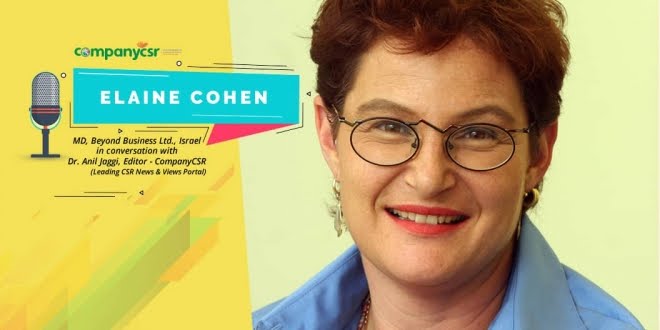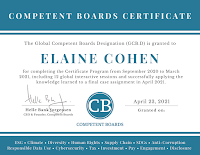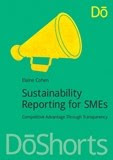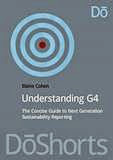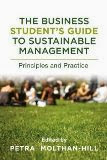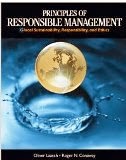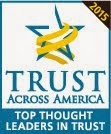25 Sustainability Reports are entered in the Creativity in Communications category in CRRA 12, the largest online annual Sustainability Reporting Awards. To enter this category, one assumes the reporters believe their report is meaningfully creative. What's creative in terms of Sustainability Reports? Well, according to CorporateRegister.com, it's this:
Which report is a real pleasure to read, because the authors have given thought to both the content and the reader? Do you find the report engaging and informative, or boring and unimaginative? This award is for the report which best succeeds in getting its message across, using creativity as a defining factor.
What does Merriam Webster say about creativity?
The quality of being creative
The ability to create
Hmm, that didn't get us very far, did it ?
So what better way than to look at the reports entered in the Creativity in Communications category to see what we can find that make them elligible for a creativity award. Let's take 'em in alpha order.
(NB: All report links go to CorporateRegister.com Report Profiles - you need to be registered to view - but then - you need to be registered to vote :) And you are planning to vote, right?)
Aggregate Industries UK Ltd Sustainability Report 2010 (GRI A+)
This report is called the "Seven Ages of Aggregate Industries" and opens up with an introduction that starts like this: " Having been part of the sustainability reporting process for around 10 years, we know that a corporate sustainability report isn’t the sexiest of reads and yet here we are for another year. You have made it to the introduction and we would like you to keep reading. After all, we have so much that we want to share. Many a sleepless night has been spent devising a way of turning 34 pages of information into a story that we hope will both inform and entertain." Yep. That's original, for sure. The report is structured around a kind of storyline that goes from Birth to a further six stages: Growth and Leading, Youth, Starting Out, Middle Age, Old Age and Retirement. In the Birth section, for example, Aggregate Industries talk about the birth of a pre-cast modular rail platform solution. I guess that explains why reporting isn't sexy. Ha-ha. The report is an entertaining read, and certainly is more creative than the standard marketplace, workplace, community and environment approach.
 |
| Birth from Aggregate Industries |
Banco Bradesco Sustainability Report 2010 (GRI A+)
Banco Bradesco's 61 page report is packed with charts and figures and tables, so that your eyes jump around from narrative to visuals rather frequently. The different thing about this report is the way it handles glossary and links. Throughout the report, whenever there is something Banco Bradesco wants to explain, it has a call-out box which contains the information or link.
 |
| Calling out for more information at Banco Bradesco |
On page 19, there are almost more call-outs than narrative. That's pretty creative.
This report is spectacular and stands out from the crowd. You can probably sense that it's going to be a different sustainability report experience when you see the cover - Michael Leibundgut holding the violin of a close friend that passed away. Not your standard hands-holding-a-globe, babies smiling or green pastures graphics.
The first 30 pages of this report is a magazine - a kind of cultural and environmental immersion with a sustainability flavor. Interesting pieces on art in Duesseldorf, pollinating bees, Switzerland's role in sustainability and electric cars, and more. The second 30-page section is the GRI report.
British American Tobacco Sustainability Report 2010 (GRI Undeclared)
BAT are by now seasoned reporters and aim to present another face of the tobacco industry than the one which gets all the hard hits. Some might say - that's creativity! However, one of the approaches in this 219 page report is Answering Challenging Stakeholder Questions, such as :
# Should a tobacco company aim to be sustainable?
# Do you engage with stakeholders who are most critical of the tobacco industry?
# Isn't this all "PR spin"?
# Do you concentrate on developing markets that have less tobacco regulation?
# Can you be responsible when you need to compete?
Maybe BAT's responses are also creative? However, sustainability reporting should be about responding to stakeholders and not just we-did-this-aren't-we-great brochures, so in that respect, BAT are doing what it takes. You can send them any question and they will consider responding to it in their next report.
This is a 118 page report which follows a repeat sequence of priorities and progress and next steps in each section. The interesting thing about this report which breaks the mold is the two sections devoted to Sport and the Arts, and the way broadcasting can empower sports and a range of festivals, art events, ballet, books and more. Short case studies illustrate the narrative. Arts has to be a creative thing, right ?
This has to be the most creative report for use of icons. Everything has an icon. A reindeer for wildlife monitoring. A windtower for wind farms. A syringe for free flu-shots. A briefcase for long term debt. A pylon for electricity. A hard-hatted person for employees. A coal cart for a coal project. And what seems like hundreds more. Icons = creativity? I am sure there is a connection somewhere. Overall, the report is has an attractive design with some nice info-graphics. It's an example of how great design can turn sustainability narrative into a creative report.
 |
| Creative presentation at Capital Power |
This report is Creativity in Red. No points for guessing why red is the dominant color for Coca Cola reporting. The report is peppered with colored balloons with interesting data and facts.
 |
| Coca Cola Ent. balloons |
Of course, as far as I know, Coca Cola Enterprises is the only company to call CSR "CRS". Perhaps that should count for a creativity award.
Following Danisco's acquisition by Du Pont last year, this is the last sustainability report to be published independently by Danisco. It's nice to see the company went ahead and published this report entitled "Ingredients for a Changing World" after the acquisition was announced. They could have taken the easy option to skip it. Danisco has a materiality matrix which takes up a whole page. Now, there's something creative!
 |
| Danisco's full page materiality matrix |
Over 55 team members throughout 12 departments within the Dell organization were engaged in the collaborative creation of this 60 page report. This report was created in-house, for the first time. Hmm, personally, I recommend consultants :) However, engaging staff in the writing of the report requires great process which I am sure involves a lot of creativity along the way. The conversation at Dell doesn't stay in house. They invite everyone to join the conversation.
 |
| Join Dell's sustainability conversation |
This is the third Deloitte report . It closes with a section called "Want to know more?" which pulls together all the relevant links to further information about issues highlighted in the report. This is the first time Deloitte uses the GRI framework and they cautiously claim to be the first among the “Big Four” organizations to issue a GRI report in the United States. They comment: "As might be anticipated for a private organization whose customary approach to sharing information is on a “need-to-know” basis, the road toward transparency is not always comfortable. As we move forward, we expect our GRI reporting to be more robust and comprehensive." That's a good disclosure and a differentiating aspect of Deloitte's reporting.
Gas Natural SDG SA 2010 Corporate Responsibility Report (GRI A+)
This is a serious 212 page report with plenty of detail . Some of the charts are so detailed that they take a while to digest.
 |
| Digesting data at Gas Natural |
This 212 page report contains a special chapter entitled "How to Read the Corporate Responsibility Report" which serves as a reader guide. This is a nice touch, even though it appears only on page 40, by which time you have either worked it out or given up. The GRI Index is also cross linked with both the UNGC Principles and the Millennium Development Goals.
HP's 244 page report is not called a report at all. That's creative. It's also includes 17 pages of product descriptions - a kind of mini-product brochure inside the report. That's even more creative. However, no-one can fault HP on its comprehensive, intensive reporting for yet another year. It is clear that the company invests many resources into producing its sustainability report and my pick for the most creative innovation in this one is a 16-photo Day in the Life of a Factory Auditor, showing the process of an experienced environmental health and safety auditor and how she goes about her two-day audit. Great creativity for a Sustainability Report.
 |
| HP auditors at work in China |
This report will not fail to impress you with its creative design which contains illustrations from the Atlas des îles perdues, an artwork by Marie Velardi. "The Atlas depicts islands that could one day sink into the ocean due to rising sea levels caused by climate change. It is a clear illustration of the vital role of mitigating the negative impacts of Kuoni’s operations on the environment while at the same time enhancing the benefits of its actions at the destinations for now and the future. "
 |
| One of the lost islands from Kuoni's report |
Created entirely in black and while, with pencil illustrations - aha! no photos at all in this report- and large white spaces and full page section introductions with quotable quotes, this report is certainly a uniquely styled presentation and well worth a look.
 |
| Quotable section heads from Kuoni Travel Holdings |
The report also contains "webcodes". By inserting the webcode on the company's website, you can navigate directly to points of specific interest. A thoughtful report focusing on serious aspects of sustainability in the tourism industry in a striking way.
Universities have a major role to play in sustainability and La Trobe University’s inaugural sustainability report is one of only a few universities worldwide that have reported in accordance with the GRI framework and, La Trobe claims, is the world’s first university sustainability report to be externally assured to AA1000 standards. This is one of the few reports I have seen that has responded adequately to GRI LA14 indicator by providing a ratio for male: female pay and confirming a gender gap. We all know that women are paid less than men for same work in almost every industry but somehow, thousands of sustainability reports don't disclose on this issue or simply spurt equality policy. La Trobe's approach is very creative - they admit they have an issue.
 |
| LA Trobe- it's so honest, it's creative |
This is the only company in this category to call their report an Accountability Report. The creative difference in this report is the link to the corporate brand - at Loyalty One everything is one. One responsibility, one environment, one community, one culture. You get the picture. The report is called One Step Further.
Microsoft's report (81 pages) is creativity in its simplicity. The report is structured section by section in four parts: Challenges, Opportunities, What we're doing, What's next. This is supplemented by "Spotlights" on specific issues and "Viewpoints" from external stakeholders. Pleasant visuals. Clean. Neat. Get's the job done. That's creative.
National Grid plc Social Purpose Report 2010 (GRI Undeclared)
This 38 page report is made up of full page images representing 26% of the report content, plus other visuals throughout the narrative pages. Someone at the National Grid is obviously very camera-happy. It's a first report so that's always something special. Focusing on social purpose (Our job is to connect people to the energy they use, safely and reliably) is a good way to express the sustainability motivations of this company. This is how it looks without words:
 |
| Creativity in connecting energy to people from the National Grid |
Newalta Corp. Sustainability 2011 (Not GRI)
This is a 29 page report, the Company's second. But you don't have to take my word for it. You can take advantage of this company's creative innovation by checking it out via their QR code.
 |
| QR straight to Newalta |
Qualcomm 2010 Social Responsibility Report (GRI B+)
This 103 page download is an export of the online report website and is called Sending a Strong Signal: Stepping up, reaching out and making responsibility quintessentially Qualcomm. Any Sustainability Report which has a 16-letter word in the report title has to be a candidate for a creativity award.
Royal Dutch Shell plc Sustainability Report 2010 (GRI A+)
Not many companies have 10 years of sustainability data to boast of. Shell does. They present this data in a fascinating chart. Getting 30 different metrics year by year for 10 years onto one page is creative. And impressive.
Teck Resources Ltd Sustainability Report 2011 (GRI A+)
Some companies go totally overboard with photos and design in sustainability reporting. Teck doesn't. This 96 page report has three photos, and one is the cover page. The rest is mainly narrative with some charts, with the exception of a nice visual showing the cycle of mineral use in a sustainable society.
The Coca-Cola Company 2009/2010 Sustainability Review (GRI undeclared)
Coca Cola contains a lot of water, but you knew that. This report includes the water footprint of beet sugar as part of Coca-Cola's sustainable agriculture initiative. We have come a long way when downstream companies are disclosing such detail about upstream impacts. I haven't seen too many companies disclosing water footprints of single raw materials to date. I am sure we will see more. This is a differentiating factor in the Coca-Cola Company's report.
The Walt Disney Company Corporate Citizenship Report 2010 (GRI undeclared)
Not many companies have 10 years of sustainability data to boast of. Shell does. They present this data in a fascinating chart. Getting 30 different metrics year by year for 10 years onto one page is creative. And impressive.
 |
| 10 years of sustainability data at Shell |
Teck Resources Ltd Sustainability Report 2011 (GRI A+)
Some companies go totally overboard with photos and design in sustainability reporting. Teck doesn't. This 96 page report has three photos, and one is the cover page. The rest is mainly narrative with some charts, with the exception of a nice visual showing the cycle of mineral use in a sustainable society.
 |
| Camping out after mine closure at Teck |
Teck Resources' report is very detailed and includes fascinating case studies. One of my favorites is how Sphinx Creek watershed was turned into a thriving habitat for rainbow and bull trout follwing reclamation of a mined pit.
The Coca-Cola Company 2009/2010 Sustainability Review (GRI undeclared)
Coca Cola contains a lot of water, but you knew that. This report includes the water footprint of beet sugar as part of Coca-Cola's sustainable agriculture initiative. We have come a long way when downstream companies are disclosing such detail about upstream impacts. I haven't seen too many companies disclosing water footprints of single raw materials to date. I am sure we will see more. This is a differentiating factor in the Coca-Cola Company's report.
 |
| Coca-Cola's sustainable agriculture initiative |
The Walt Disney Company Corporate Citizenship Report 2010 (GRI undeclared)
The Disney report is a journey into the wondrous and magical world of wholesome and fun entertainment. The report contains many case studies about ways in which Disney uses the power of entertainment to advance sustainable lifestyles and improve environmental impacts. The World of Color, for example, is a water-conserving nighttime attraction. Looks pretty creative to me!
 |
| A sustainable water attraction from The Walt Disney Company |
 |
| Women get to high places at Waggener Edstrom |
And one more
So these are 24 examples of creativity in Sustainability Reporting. But I promised 25. Ah, well, you see, the remaining report in the Creativity in Communications category is my very own company's report - Beyond Business Sustainability Report 2010 - How a little consulting firm makes a BIG impact (GRI A). So, now that you know that my report is a contender, in competition with all these other creative reports, you can judge my comments accordingly. But I also invite you to take a look at my report and check out how mindbogglingly creative we have been. And if you would like to vote for the Beyond Business Sustainability Report, it would make me as happy as a very large helping of my favorite ice cream.
In any event, I urge you to reward this bunch of great reporters and use your five votes in this category to acknowledge those you think lead the pack in creativity. Vote NOW (or until 21st January) here.
elaine cohen, CSR consultant, Sustainability Reporter, HR Professional, Ice Cream Addict. Author of CSR for HR: A necessary partnership for advancing responsible business practices Contact me via www.twitter.com/elainecohen on Twitter or via my business website www.b-yond.biz/en (BeyondBusiness, an inspired CSR consulting and Sustainability Reporting firm)






